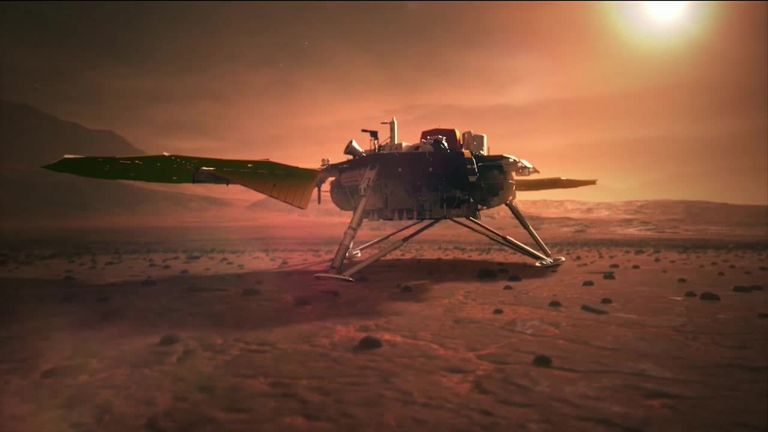NASA's Voyager 2 reaches interstellar space - 11 billion miles from Earth
The breakthrough means the spacecraft has become the second human-made object to travel so far - 41 years after its mission began.
Monday 10 December 2018 19:24, UK
The Voyager 2 probe has left the protective bubble around the sun and is flying through interstellar space, NASA says.
The breakthrough means the spacecraft has become the second human-made object to travel so far.
It passed the boundary on 5 November and is now more than 11 billion miles from Earth.
Six years ago, its twin spacecraft Voyager 1 broke the outer boundary of the heliopause, where the hot solar wind meets the cold, dense space between stars known as the interstellar medium.
Nicky Fox, director of the heliophysics division at NASA, said: "This time is even better for us.
"To have the Voyagers sending back information about the edge of the sun's influence gives us an unprecedented glimpse of truly uncharted territory."
The two spacecraft were launched in 1977 on a mission to explore planets in the solar system.
Nasa said the twin probes have left the heliosphere but have not yet left the solar system "and won't be leaving anytime soon".
The space agency said: "The boundary of the solar system is considered to be beyond the outer edge of the Oort Cloud, a collection of small objects that are still under the influence of the sun's gravity."
NASA says it will take about 300 years for Voyager 2 to reach the inner edge of the Oort Cloud, and possibly 30,000 years to fly beyond it.
Suzanne Dodd, Voyager project manager at NASA's Jet Propulsion Laboratory in California, said: "We're looking forward to what we'll be able to learn from having both probes outside the heliopause."
The two spacecraft were designed to last five years and study Jupiter and Saturn.
A major concern is power and NASA has to keep shutting down instruments to reserve power.
Each spacecraft carries a Golden Record of earth sounds, pictures and messages, which may one day be the only trace of human civilisation.





